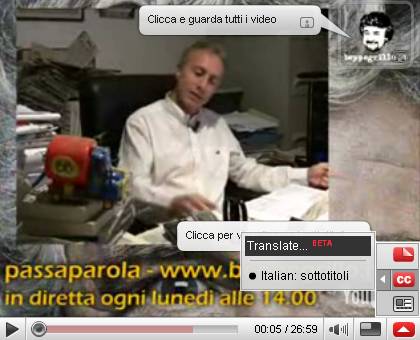
This feature provides real-time translations of video captions with a variety of language options, all powered by Google Translate. While YouTube readily admits that machine translations have flaws, they hope to make their videos more accessible to a broader audience.
Here are the instructions from YouTube’s blog: “To get a translation for your preferred language, move the mouse over the bottom-right arrow, and then over the small triangle next to the CC (or subtitle) icon, to see the captions menu. Click on the “Translate…” button and then you will be given a choice of many different languages.”
Take a look at how this works with the link below.
So what do you think? Will the widespread use of machine translations, particularly Google Translate, cause a stir amongst more traditional translators? Or is this just another way to help tackle the language barriers?





